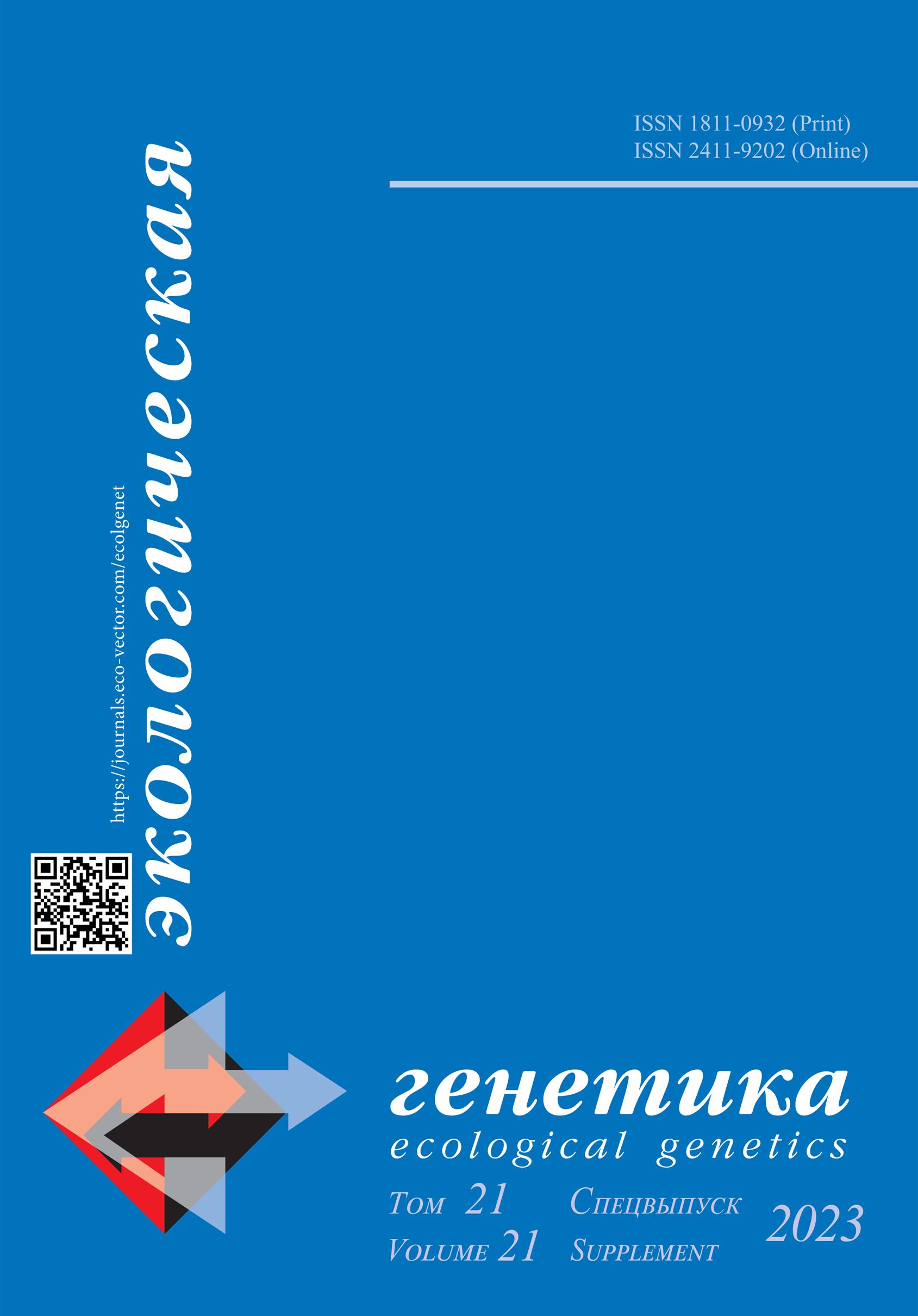Putative molecular pathways of autoregulation of nodulation activated by CLE peptides in pea
- Авторы: Kochetkova L.A.1, Lebedeva M.A.2, Lutova L.A.2
-
Учреждения:
- Sirius University
- Saint Petersburg State University
- Выпуск: Том 21 (2023): Спецвыпуск
- Страницы: 53-53
- Раздел: «ГМО: ИСТОРИЯ, ДОСТИЖЕНИЯ, СОЦИАЛЬНЫЕ И ЭКОЛОГИЧЕСКИЕ РИСКИ»
- Статья получена: 14.08.2023
- Статья одобрена: 03.09.2023
- Статья опубликована: 04.12.2023
- URL: https://journals.eco-vector.com/ecolgenet/article/view/568446
- DOI: https://doi.org/10.17816/ecogen568446
- ID: 568446
Цитировать
Полный текст
Аннотация
Legume plants are important for ecosystems due to their ability to form root nodules in symbiosis with rhizobia, where nitrogen fixation takes place. The number of symbiotic nodules is regulated by the CLE peptides inhibiting excessive nodule formation. Previously, we have identified four genes encoding CLE peptides, activated in response to rhizobia inoculation in pea. Three of them, PsCLE13, PsCLE12 and PsNIC-like, were also activated by nitrate, and, therefore, they could mediate nitrate-dependent inhibition of nodulation [1]. Overexpression of PsCLE13 and PsCLE12 inhibited nodulation on transgenic roots: however, the role of PsNIC-like and PsCLE12-like have not been investigated.
In this study, we constructed vectors for overexpression of the PsCLE12-like and PsNIC-like genes to study their possible role in nodulation, and also analyzed the expression levels of nodulation-related genes in transgenic roots overexpressing four PsCLEs genes. Moreover, vectors for CRISPR-Cas9-mediated gene editing of the PsCLE12 and PsCLE13 genes were constructed to further explore the role of these genes in nodulation. Overexpression of PsCLE12-like, PsCLE13 and PsCLE12 resulted in increased expression levels of TOO MUCH LOVE (PsTMLs) genes known as root-acting regulators of nodule number. In addition, in the roots overexpressing four PsCLEs genes, down regulation of the PsSYM37 gene (encoding the receptor for Nod-factors) was observed, suggesting that the CLE peptides might inhibit the development of symbiotic nodules at the earliest stages of symbiosis development upon Nod-factor perception.
Ключевые слова
Полный текст
Legume plants are important for ecosystems due to their ability to form root nodules in symbiosis with rhizobia, where nitrogen fixation takes place. The number of symbiotic nodules is regulated by the CLE peptides inhibiting excessive nodule formation. Previously, we have identified four genes encoding CLE peptides, activated in response to rhizobia inoculation in pea. Three of them, PsCLE13, PsCLE12 and PsNIC-like, were also activated by nitrate, and, therefore, they could mediate nitrate-dependent inhibition of nodulation [1]. Overexpression of PsCLE13 and PsCLE12 inhibited nodulation on transgenic roots: however, the role of PsNIC-like and PsCLE12-like have not been investigated.
In this study, we constructed vectors for overexpression of the PsCLE12-like and PsNIC-like genes to study their possible role in nodulation, and also analyzed the expression levels of nodulation-related genes in transgenic roots overexpressing four PsCLEs genes. Moreover, vectors for CRISPR-Cas9-mediated gene editing of the PsCLE12 and PsCLE13 genes were constructed to further explore the role of these genes in nodulation. Overexpression of PsCLE12-like, PsCLE13 and PsCLE12 resulted in increased expression levels of TOO MUCH LOVE (PsTMLs) genes known as root-acting regulators of nodule number. In addition, in the roots overexpressing four PsCLEs genes, down regulation of the PsSYM37 gene (encoding the receptor for Nod-factors) was observed, suggesting that the CLE peptides might inhibit the development of symbiotic nodules at the earliest stages of symbiosis development upon Nod-factor perception.
Об авторах
Liliya A. Kochetkova
Sirius University
Email: liliya15kochetkova2000@gmail.com
Master student
Россия, SochiMaria A. Lebedeva
Saint Petersburg State University
Email: m.a.lebedeva@spbu.ru
ORCID iD: 0000-0002-6412-7401
SPIN-код: 6000-6307
PhD, Senior Researcher, Department of Genetics and Biotechnology
Россия, Saint PetersburgLudmila A. Lutova
Saint Petersburg State University
Автор, ответственный за переписку.
Email: la.lutova@gmail.com
ORCID iD: 0000-0001-6125-0757
SPIN-код: 3685-7136
Professor
Россия, Saint PetersburgСписок литературы
- Lebedeva MA, Sadikova DS, Dobychkina DA, et al. CLAVATA3/EMBRYO SURROUNDING REGION Genes Involved in Symbiotic Nodulation in Pisum sativum. Agronomy. 2022;12(11):2840. doi: 10.3390/agronomy12112840
Дополнительные файлы










